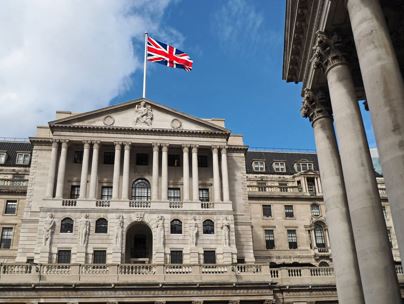
- Bank of England super-hikes the base rate by 0.5% to 5%, sparking fresh uncertainty about where rates will end up.
- It’s the 13th time in a row rates have been hiked, making it a highly unlucky path for borrowers
- Policymakers were split on the action needed with 2 voting for rates to remain at 4.5%
- Pound volatile in reaction to the Bank’s move, rising sharply then losing ground as investors assess difficult times ahead of UK economy.
- UK 2-year gilt yields also swing sharply, losing ground then shooting up above recent 15-year highs.
Susannah Streeter, head of money and markets, Hargreaves Lansdown:
‘’ ’Bank of England policymakers are feeling the heat, stuck on an uncomfortable platform with core inflation increasingly hot and sticky, which is why they’ve opted to super-size the rate hike, with a 0.5% increase.
The decision has sparked a fresh round of turbulence, with 2-year gilt yields falling back below 5% then shooting back above recent highs to over 5.1% as uncertainty reigns about how far rates will go. Investors are trying to assess whether today’s big bazooka now, might be enough to stem further rate hikes or whether more will still be necessary. The pound has had a case of the jitters, rising sharply to 1.283, before losing ground again to 1.276. Volatility is set to remain the order of the day as investors assess what impact this hawkish move will have on the UK economy.
This is the 13th rise in a row and it’s highly unlucky for mortgage holders on a variable rate or facing the prospect scrambling around to find a new fixed deal. It’s not so much the stubborn headline rate of CPI which has prompted this move, but the worries that inflation-led wage increases are becoming embedded in the economy, pushing up the core inflation rate to a 31-year high of 7.1%, making it the outlier of advanced economies.
There was dissent around the table, with two policymakers to keep rates on hold and mind the gap, due to the lag effect of previous rate hikes. The majority clearly believed acting hard and fast now, has greater potential to shove the immovable consumer prices in the right direction, rather than opting for multiple smaller pushes. That’s not to say there will not be more to come, with the Bank stressing that if inflationary pressures persist more tightening will be required.
There are glimmers of hope that a tighter path of monetary policy may not have to be trodden, with forward indicators are already flashing that a larger drop in inflation is incoming. Producer input price inflation eased sharply in May to 0.5% from 4.2% indicating pressures are easing further up the supply chain. These are prices that will be passed on at the factory gate and should make their way onto our shelves. The prospect of recession again looming, given the mortgage shock, may dampen down pay demands and reduce the wage spiral risks. A fast train of realisation is set to hit that budgets are set for a big squeeze as refinancing costs escalate, and deadlines loom for a larger span of borrowers. With borrowing costs shooting up again and many more companies and consumers set to tighten belts, the prospects of the UK avoiding a recession look very slim.’’





